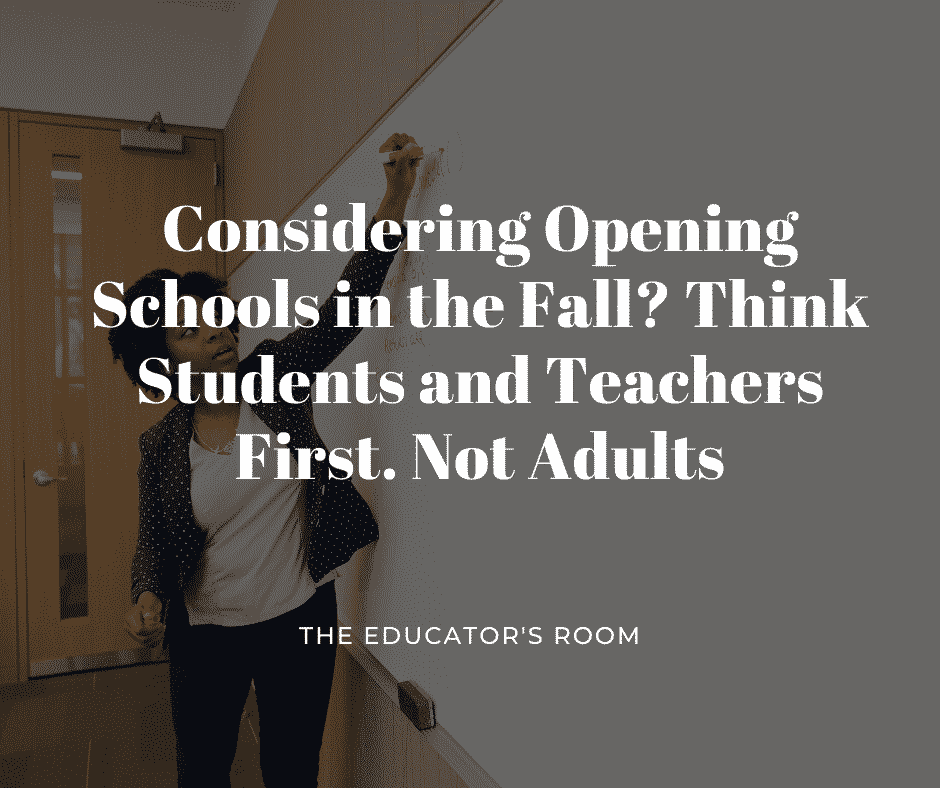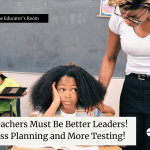What a crazy ride 2020 has been. At the beginning of this school year, I don’t think anyone would have thought that we would end like this. Seniors weren’t afforded the experience of attending prom or graduation. Fifth graders weren’t able to say goodbye to their primary teachers before going off to middle school. Eighth graders didn’t have the chance to bid farewell to their friends. Teachers did their best to wrap up the school year well for their students.
Around the country, school districts are currently discussing the next steps for schools opening in the fall. What will this look like? How can schools effectively open, provide optimal instruction, and keep students and staff safe? The Centers for Disease Control and Prevention recently released guidelines to consider reopening schools in the fall. However, teachers are frustrated trying to imagine how they could possibly provide engaging and impactful instruction with such unrealistic guidelines. Parents are worried about having to work and possibly continue homeschooling their children.
Everything is uncertain.
In the midst of these conversations regarding the next steps, it is essential to consider the needs of our students and an untapped resource in every district are its teachers. Teachers are the experts. Are we being invited to the conversation about action steps to consider? Considering teachers are the first line of both offense and defense, are we being invited to the conversation about the next steps to consider? Because we spend the most time with students, we know that it’s imperative that we put children first when discussing how to open schools- not adults, not the economy, children.
Here are some factors to consider:
Many students and families face food insecurity and depend on schools for daily meals. The number of families facing food insecurity is only increasing as a result of the COVID-19 pandemic and job loss. It is critical that measures are put in place to provide meals for students in the long run.
Students are facing emotional trauma. We are not hearing enough about this. Their lives have been completely changed as of mid-March. They miss their friends and their teachers. They miss seeing the school guidance counselor and knowing they are cared for. They miss the daily structure the classroom brought. What outlets do they currently have? What systems will schools have in place on day one to ensure every single student in need will have a trained professional to tend to them?
Adults need trauma-informed care as well. In order to effectively be prepared for the students they will be teaching in the fall, teachers need mental wellness care as well. Both students and teachers have faced an incredible amount of trauma and uncertainty as a result of this pandemic we are in. Families have lost loved ones. Parents have been laid off from their jobs. How will districts and schools provide resources to ensure the emotional needs of both students and teachers are met?
What will we do about missed instruction? The reality is that the vast majority of parents were ill-prepared to assist their students with remote instruction. Students lost out on a quarter of a school year worth of instruction. How will we fill the gaps? What about the IEP goals for our students with special needs or the needs of English Language Learners? What role will intervention data play on day 1?
It is overwhelming to consider the multiple variables that need to be considered before schools even consider opening again. One of the most essential facts to remember is that students need to be at the forefront of every single decision being made. Their lives have been impacted more than we can imagine and things cannot be expected to go back to normal.
These are just some of the factors from the student’s perspective that we need to consider when considering when to open schools.
What are some things districts and schools can do right now and in the near future?
Develop an effective remote learning plan. We will not point blame at anyone for the way the most recent school year turned out; however, there is a critical need for districts to build a committee that is responsible for the implementation of remote learning. Every single factor should be considered such as students with IEPs, 504 plans, students and teachers who do not have reliable internet service, etc. This plan will take various resources. Student and teachers should certainly be at the table for this conversation
Deep clean buildings. This is a given. Every ounce of the school building needs to been cleaned and sanitized as though it is a hospital building per CDC guidelines.
Consider investing in personal protective equipment such as masks, face coverings, and gloves for every student, teacher, and cleaning personnel in the building.
Are there any additional steps districts should consider when considering opening schools in the fall?







